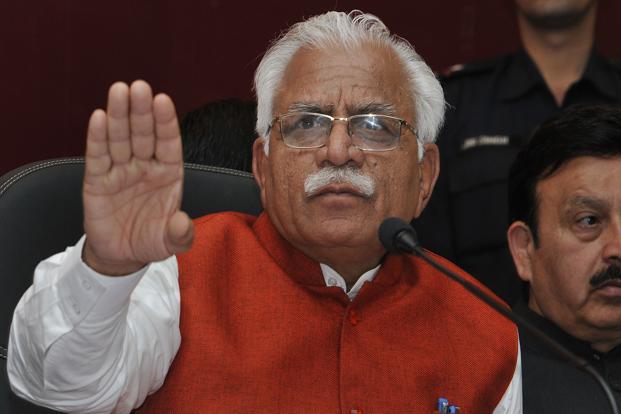Uttar Pradesh CM, Yogi Adityanath has emerged as the face of clean governance in the state of Uttar Pradesh. The problem in Uttar Pradesh was not that of a weak law and order structure but about the total absence of it. It was a paradise for organized Mafia which went about their business, unbridled and unchecked. The relentless crackdown has made the lives of criminals extremely difficult. Even the High Court of Punjab and Haryana recently praised the Adityanath government in the state of Uttar Pradesh for its model in order to extinguish criminal elements and maintain law and order.
Just like Adityanath has emerged as the man who pulled the State of Uttar Pradesh out of lawlessness, Haryana CM Manoharlal Khattar has emerged as the face of transparency in government jobs in Haryana. The present Haryana chief minister had given indications of curbing corruption in the process of recruitment to government jobs right from the word go. In 2016 itself the Haryana CM had stated that the state government would offer 10,000 jobs to youngsters every year. He had also reiterated his resolve to not tolerate corruption and to take action against corrupt employees even at the block and tehsil level.
In 2015 itself, the Haryana government led by Manohar Lal Khattar had fixed the limit of interview marks in recruitment to government jobs to 12 while 88 marks were fixed for written examinations for deciding merit. In the past, it had been alleged that candidates with influential background were able to manipulate the process when the weightage of interview marks stood between 20 to 40 marks. This new rule was made applicable by Haryana Staff Selection Commission to Class II and III posts of various departments, boards and corporations. The government took this decision in order to eliminate manipulation and nepotism from the selection process.
In 2017, CM Manohar Lal Khattar, the Haryana Government had set a target of providing two lakh jobs to the youngsters of the state. The Haryana government led by CM Khattar was also reportedly lauded at that time for bringing transparency in government jobs and abolishing interviews for classes III and IV category jobs.
The Haryana government has not only introduced fairness and transparency in recruitment but has also made the systems of transfers and postings more transparent. Khattar reportedly said in 2017, “Earlier, the teachers had to make frequent visits to the offices to get their transfers and postings done, but the state government has implemented a transparent online teachers transfer policy to provide them station of their choice so that they could concentrate more on teaching.”
The number of government jobs has grown exponentially under the leadership of Manohar Lal Khattar in Haryana. The number of government vacancies opened by the Indian National Lok Dal (INLD) between its tenure 1999 to 2005 was 5591. The job opening under the Congress regime from 2005 to 2009 was 18,020. The government led by Bhupinder Singh Hooda came to power again and the number of government vacancies grew to 44,302. The Khattar government broke all the records and the number of government vacancies in the last four and a half years was 54,197. However, the government has been able to maintain high standards of transparency even while undertaking such mass recruitment.
https://twitter.com/abhina_prakash/status/1092679748147384320
The Haryana government has made it a point to fill all vacant posts in order to ensure proper administrative functioning. As per a report, there is going to be a mega recruitment drive in the boards and corporations of the state government this year ahead of the Haryana assembly polls. The Haryana government has not only been successful in filling vacant posts at an amazing rate but has also succeeded in rooting out corruption, manipulation and nepotism in recuritment. It is CM Manohar Lal Khattar who is at the centre of such clean recruitment process in the state.
